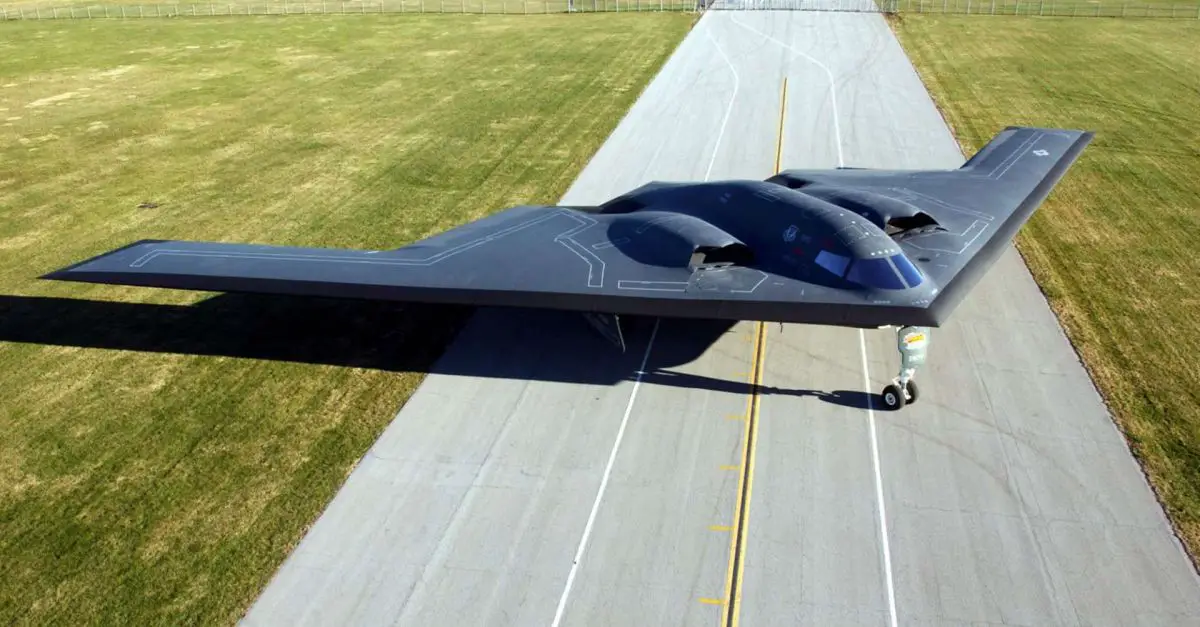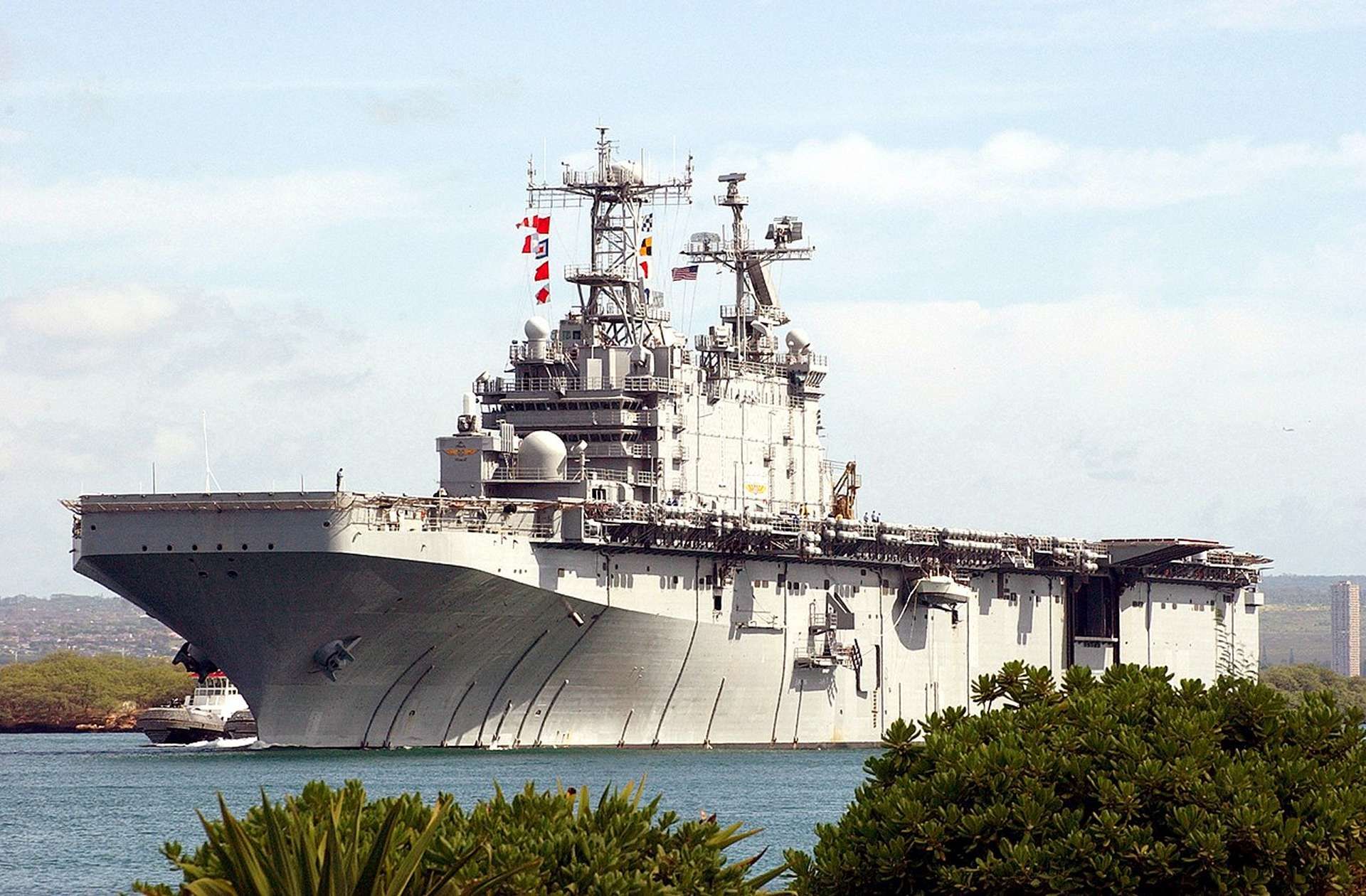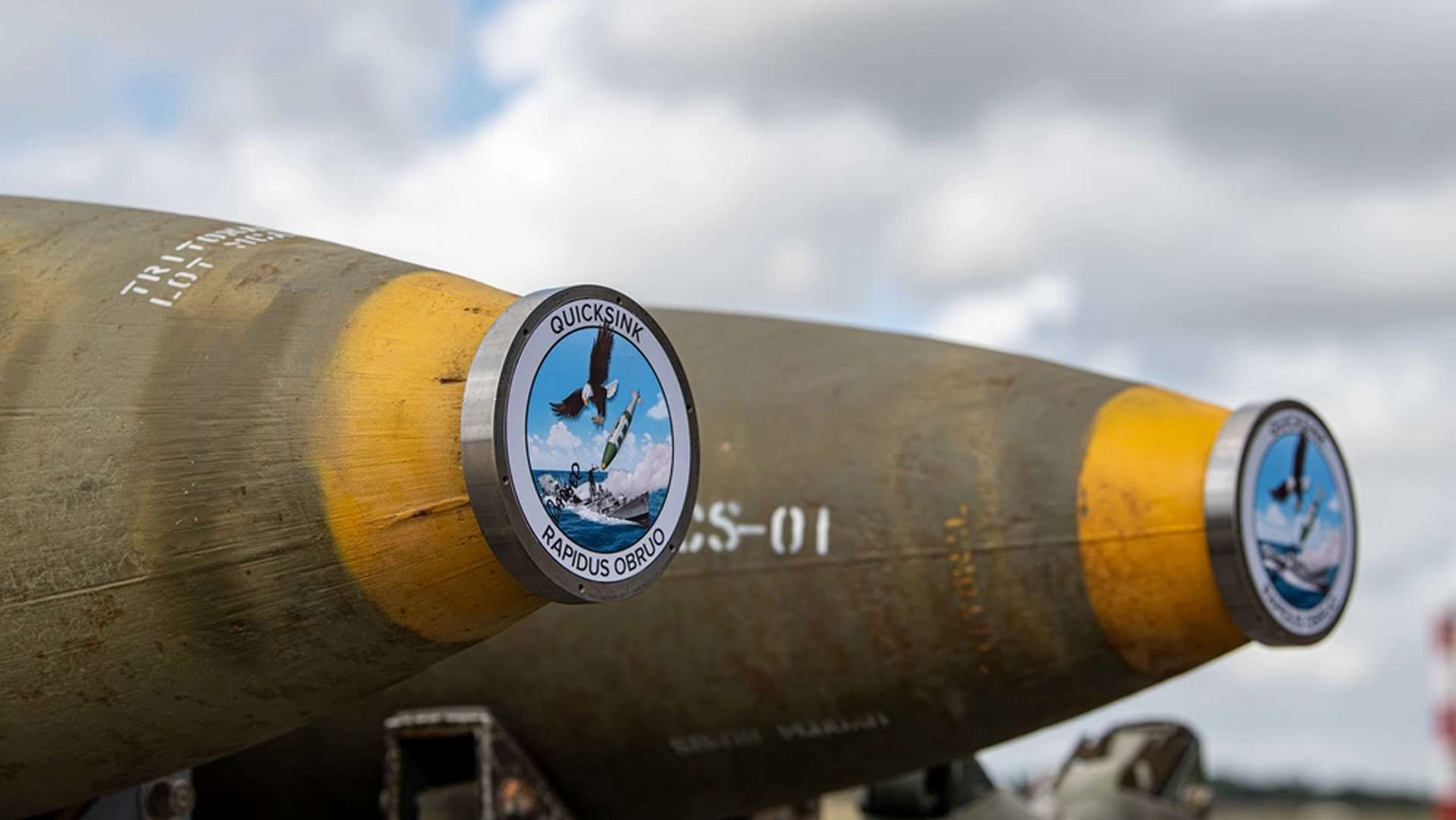Breaking News
US Air Force's B-2 Stealth Bomber uses new naval strike weapon during RIMPAC 2024 exercise.
As reported by the US Department of Defense (DoD) on July 22, 2024, during the RIMPAC 2024 exercise, the U.S. Air Force's B-2 Spirit bomber demonstrated the QUICKSINK low-cost maritime strike capability designed to sink surface vessels using modified JDAM precision-guided bombs. This event, which took place during the second SINKEX (Sinking Exercise), marked the first public report of the B-2 testing this modern anti-ship weapon system, showcasing the B-2's relevance in the post-Cold War era.
Follow Army Recognition on Google News at this link

The B-2 project, which remained highly classified, saw its first aircraft unveiled in 1988 and entering service in 1997, with a focus on stealth technologies and the use of composite materials to reduce radar detectability. (Picture source: US Air Force)
RIMPAC 2024, the 29th iteration of the biennial Rim of the Pacific exercise, is taking place from June 27 to August 1 in and around the Hawaiian Islands. It involves 29 nations, 40 surface ships, three submarines, 14 national land forces, over 150 aircraft, and 25,000 personnel. The exercise focuses on enhancing interoperability and cooperation among participating nations through activities such as anti-submarine warfare, multi-ship surface warfare, amphibious landings, and disaster relief operations. Significant components include a humanitarian aid exercise involving over 2,500 participants and a live-fire sinking exercise (SINKEX) of the retired USS Tarawa (LHA-1).
The USS Tarawa (LHA-1) was the lead ship of the Tarawa-class amphibious assault ships, commissioned on May 29, 1976, and decommissioned on March 31, 2009. The vessel measured 250 meters in length, with a beam of 32 meters and a draft of 8 meters. It had a displacement of approximately 39,000 metric tons when fully loaded and could carry a complement of 2,813 personnel, including the ship's crew and embarked troops.
Its notable missions included participation in Operation Desert Storm, humanitarian assistance in Somalia, and relief efforts in Bangladesh. After decommissioning, Tarawa was maintained at Pearl Harbor and later designated as a target for a sinking exercise (SINKEX) during the RIMPAC 2024 exercise, along with the former Austin-class amphibious transport dock USS Dubuque (LPD-8).
The SINKEX (Sink at-sea live-fire training exercise) exercises allowed forces from Australia, Malaysia, the Netherlands, South Korea, and various U.S. military branches to practice gunnery, missile drills, torpedo accuracy, and other operations in a real-world environment. The ships undergo cleaning to remove hazardous materials like polychlorinated biphenyls (PCBs) and petroleum products, complying with environmental regulations.
SINKEX is conducted at least 50 nautical miles from shore and at a depth of at least 1,800 meters to ensure safe and environmentally compliant disposal. The exercise aims to provide realistic training scenarios, enhancing the readiness and effectiveness of naval forces, and also helps to improve the ability of partner nations to plan and execute complex maritime operations, including precision and long-range strikes.

The USS Tarawa (LHA-1) was the lead ship of the Tarawa-class amphibious assault ships, commissioned on May 29, 1976, and decommissioned on March 31, 2009. (Picture source: US Navy)
In a collaborative effort with the U.S. Navy, the B-2 Spirit demonstrated the QUICKSINK capability during the second SINKEX. The QUICKSINK program, developed by the U.S. Air Force Research Laboratory (AFRL), is a Joint Capability Technology Demonstration (JCTD) designed to create a low-cost, air-delivered capability for sinking surface vessels over vast ocean areas.
This system employs a modified GBU-31/B Joint Direct Attack Munition (JDAM) with GPS-assisted inertial navigation system (INS) guidance, a new radar seeker, and an Imaging Infrared (IIR) camera, converting the JDAMs into precision-guided bombs capable of targeting both stationary and moving maritime threats. The program aims to achieve effects similar to torpedoes from the air, allowing for rapid and widespread strikes. Previous QUICKSINK demonstrations in 2021 and 2022 have shown that an F-15E Strike Eagle using such modified JDAMs could successfully sink a full-scale vessel.
The Northrop Grumman B-2 Spirit, also known as the Stealth Bomber, is an American aircraft designed for strategic bombing. Development began in the late 1970s to counter the advancements in Soviet air defenses, leading to a contract awarded to Northrop Corporation by the U.S. Air Force in 1981. The B-2 project, which remained highly classified, saw its first aircraft unveiled in 1988 and entering service in 1997. Key development focuses included the incorporation of stealth technology and the use of composite materials to reduce radar detectability.

The QUICKSINK system employs a modified GBU-31/B Joint Direct Attack Munition (JDAM) with GPS-assisted inertial navigation system (INS) guidance, a new radar seeker, and an Imaging Infrared (IIR) camera. (Picture source: US DoD)
The B-2 program initially planned for 132 bombers, but this number was reduced to 21 due to budget constraints and changes in the geopolitical landscape post-Cold War. The aircraft's cost reflects its advanced technology, offering capabilities such as long-range missions, significant payload capacity, and reduced radar visibility, which enables operations without the need for nearby bases. The B-2 has been utilized in combat operations in Kosovo, Iraq, and Afghanistan, executing precision strikes while avoiding detection. The recent redeployment of B-2 bombers to Guam in response to actions by China and North Korea, along with its participation in the 'Valiant Shield 24' exercise, underscores the aircraft's strategic importance for the United States.
Ongoing modernization programs for the B-2, including a recent $7 billion contract awarded to Northrop Grumman, aim to address new threats by updating its defensive systems and enhancing its communication systems to guard against cyber threats. For instance, the Spirit Realm 1 (SR 1) upgrade introduces new capabilities to its communications and weapons systems through an open mission systems architecture. The SR 1 system includes improved displays, flight hardware, and enhancements to the bomber's survivability. This upgrade enables faster and more efficient software updates, allowing the integration of new and advanced weapons, and facilitating quicker adaptation to evolving combat requirements. This approach reduces the time for software updates from years to months, improving the B-2's operational capabilities and ensuring its relevance in the post-Cold War era.
Additionally, the integration of upgraded nuclear weapons, such as the B61-12 bombs, ensures its continued effectiveness. The B-2 fleet, stationed at Whiteman Air Force Base in Missouri and operated by the 509th Bomb Wing, plays a role in the U.S. nuclear triad and conventional strike forces. With a range of approximately 6,900 miles unrefueled, extendable via in-flight refueling, the B-2 can carry up to 40,000 pounds of conventional and nuclear ordnance, supporting various mission profiles with an operational ceiling of 50,000 feet.


























